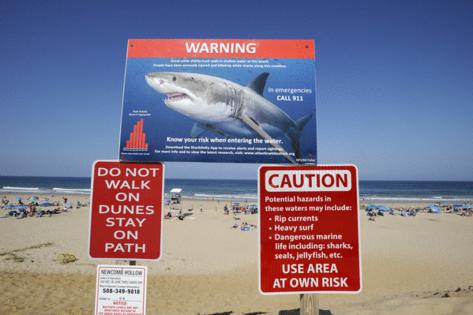Cape Cod shark detections: Where are the top hotspots for white sharks?
Published in Science & Technology News
BOSTON — As white sharks return to the Cape, researchers are helping the public chomp on shark hotspot data from last summer and fall.
The Atlantic White Shark Conservancy’s “White Shark Logbook” has been updated with last year’s acoustic detection data of tagged apex predators.
More than 100 individual sharks were detected along the Cape last year — resulting in nearly 170,000 total detections at the scientist’s receivers.
So where were the top shark hotspots last year?
“It’s clear the Outer Cape is really where it’s at when it comes to white shark activity in Massachusetts’ waters,” said Megan Winton, research scientist at the Atlantic White Shark Conservancy. “Also, Cape Cod Bay still had a fair amount of activity.”
The most popular shark spot was along Chatham’s Monomoy Island, where sharks hunt for seals. The “South Shark Cove” receiver along Monomoy had the most detections with 18,122 last year — 74 individual tagged sharks were detected there.
The runner-up for detections was Nauset North in Orleans with 13,896 last year — 45 individual sharks were detected there.
Other hotspots were: Chatham Harbor Inlet South (10,604 detections, with 79 sharks); Nauset Beach South (6,214 detections, with 76 sharks); Coast Guard Beach (7,897 detections, with 72 sharks); Nauset Light (10,040 detections, with 73 sharks); Marconi (7,821 detections, with 72 sharks); and Lecount Hollow (9,388 detections, with 61 sharks).
When it comes to Cape Cod Bay, one of the top spots was Manomet Point in Plymouth — with 2,689 detections and 13 individual sharks.
“Many seals are there, so that makes sense,” Winton said. “A lot of folks are surprised when we tell them that sharks are also in the Bay.”
There were 109 total sharks detected last year, down from 128 sharks during the previous year. But there were more overall shark detections last year with 169,601 detections — compared to 145,440 detections from the previous year.
“We don’t really know what’s behind that with the decrease in sharks, but that’s still a lot of sharks,” Winton said.
A lot of sharks only pass through the Cape for a seal meal before continuing north, while other sharks spend a lot of time along the Cape.
For instance, the 8.5-foot shark named Bruce had 15,802 total detections last year.
“We have resident individuals that spend seemingly most of the summer and fall here, actively patrolling the coastline for seals,” Winton said.
Breaking the detections down by month, the most detections were in October (55,187 detections), followed by September (44,662) and August (40,725). There were 5,911 detections last July, and 562 detections in June.
Sharks were still here in November and December last year — with 20,845 detections in November, and 1,639 detections in December.
Data for the White Shark Logbook is managed in collaboration with the Massachusetts Division of Marine Fisheries.
-------------
©2025 MediaNews Group, Inc. Visit at bostonherald.com. Distributed by Tribune Content Agency, LLC.







Comments